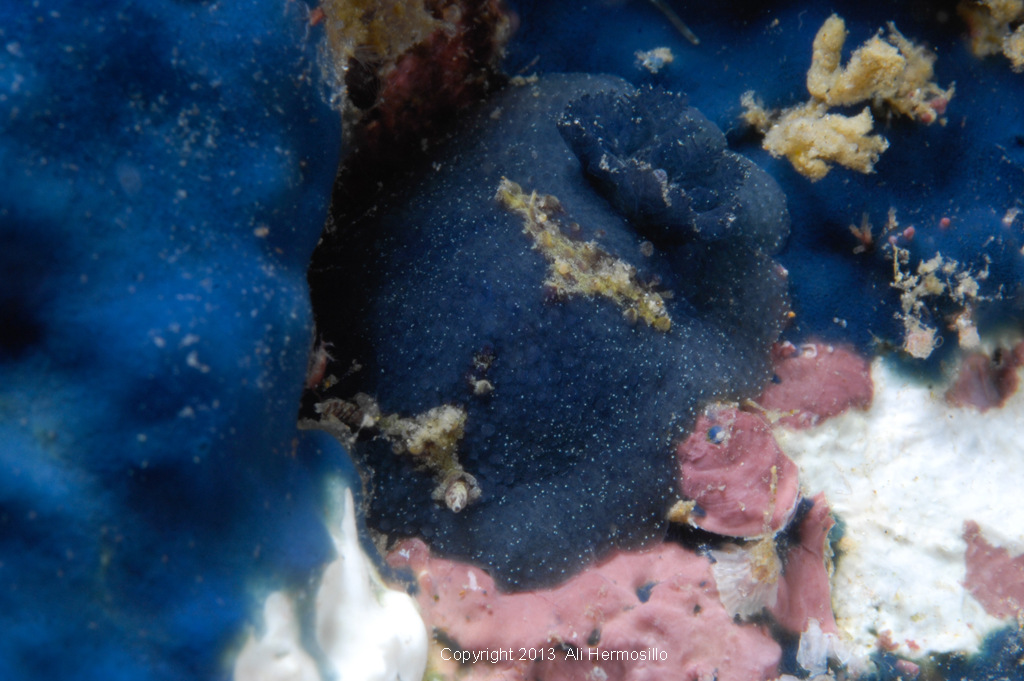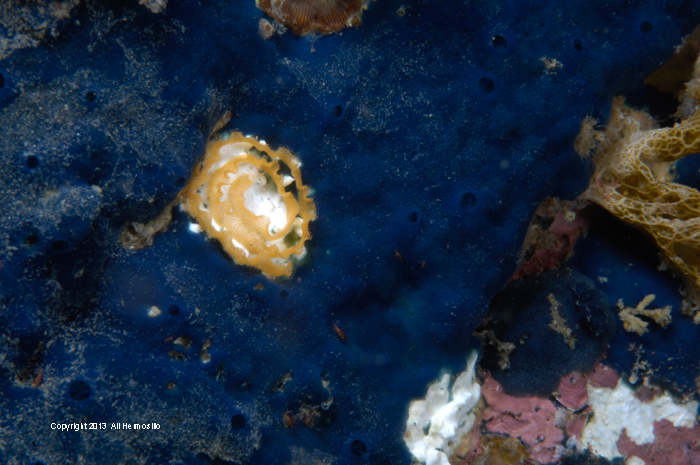 |
Doris immonda?
Image courtesy of Ali HermosilloMato Point, Anilao, Philippines
Pic taken with Nikon D-2X
Egg Mass of Doris immonda ???
Well, this one is a sticky wicket. Two of the top Slugologists in the world are in disagreement on which ID is correct. One ID'd it as Doris immonda, while the other says - "I disagree about this. Slugologist A is basing his ID on the size of the tubercles. I am basing mine on color and the fact that it is on a blue sponge. From my perspective, Doris immonda is a larger animal and I have never seen it on a blue sponge. Unless we dissect the animal or sequence it, we can't be sure. I think it should be presented as the two possibilities and state that we cannot be certain until the follow up research is done. Doris immonda has smooth inner lateral teeth and pectinate outer ones, while D. nucleola has denticulate inner teeth and smooth outer ones. That should be simple enough to check."
And so they will.
Although common in Hawaii, this is the first time I can recall of it being found in the Anilao area. Joint credit goes to well known guide Alexis Principe, and two ladies with the keenest eyes I know of for finding sea slugs, Ali Hermosillo, and Christiane Waldrich. Doris nucleoli may be a junior synonym.
Apparently this species demonstrates a huge variation in color from yellow to bright orange to brown and even apparently blue. The real distinctive characteristic is the mid-dorsal band of pigment, on low round tubercles.
A small species measuring only up to about 18mm, it ranges from Japan to Australia, including observations in Papua New Guinea, New Caledonia, the Hawai'ian Islands and even in the eastern Pacific of Costa Rica.

Doris immonda (Risbec, 1928) or Doris nucleola?
Sammamish, WA 98074
Jun., 2013
Send Dave email at davidwbehrens@gmail.com

|
